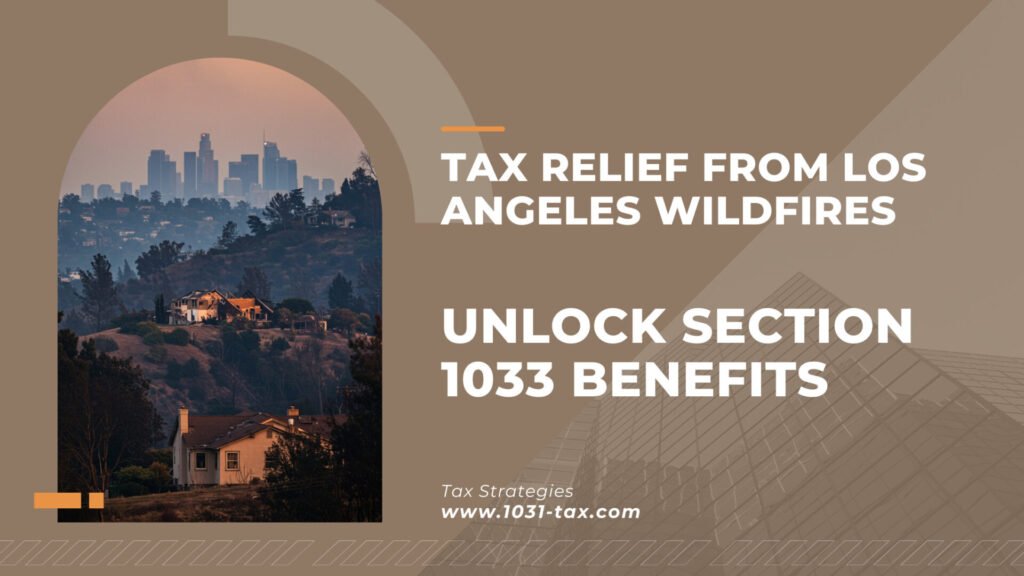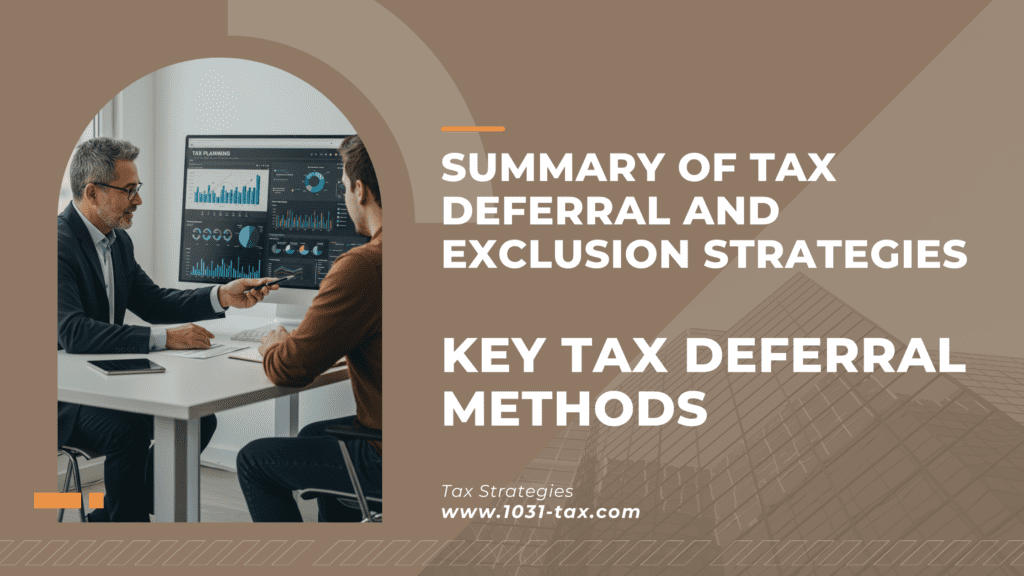Tax Relief from Los Angeles Wildfires: Unlock Section 1033 Benefits for Replacement Property
Tax Relief from Los Angeles Wildfires: Unlock Section 1033 Benefits for Replacement Property The devastating wildfires in Los Angeles have left a trail of destruction, damaging homes, businesses, and properties across our community. If you’re among those facing significant losses, there’s hope: tax relief provisions can ease your financial burden during this challenging time. Specifically, Section 1033 of the Internal Revenue Code offers critical support for property owners impacted by involuntary conversions, such as wildfires. Here’s what you need to know about this tax relief option and how it can help you recover. Table of Contents What Is Section 1033 Tax Relief? Key Benefits of Section 1033 for Wildfire Victims Steps to Secure Your Tax Relief What Is Section 1033 Tax Relief? Section 1033 is a tax provision designed to assist taxpayers whose property is involuntarily converted due to events like wildfires, theft, or condemnation. Under this rule, you can defer recognizing a gain—meaning you won’t owe immediate taxes—if you reinvest insurance proceeds or sale proceeds into a replacement property that is “similar or related in service or use” to the one you lost. Key Benefits of Section 1033 for Wildfire Victims Deferral of GainIf your property was destroyed by the Los Angeles wildfires and your insurance payout exceeds your property’s basis (or you’re uninsured and forced to sell, with proceeds exceeding the basis), you can delay paying taxes on that gain. The key? Reinvest those proceeds into a new, qualifying property. Flexible Replacement Property TimelineYou have up to 2 years to purchase a replacement property. Need more time? Request an extension for an additional year. If your property falls within a federally declared disaster area—like many Los Angeles wildfire zones—you’re granted up to 4 years to complete the reinvestment. Basis Adjustment AdvantageThe basis of your new property is adjusted to account for the deferred gain. This means you’ll eventually pay the tax when you sell the replacement property, similar to a Section 1031 Exchange. However, unlike Section 1031, Section 1033 doesn’t require a qualified intermediary, making it simpler to navigate. Steps to Secure Your Tax Relief To take full advantage of Section 1033 tax relief, follow these actionable steps: Document Your Loss: Keep detailed records of the wildfire damage, insurance claims, and any compensation you receive. Act Quickly: Identify and purchase a replacement property within the required timeframe—2 years standard, or up to 4 years in federally declared disaster areas. Consult a Tax Professional: Partner with a tax advisor or CPA to ensure compliance with Section 1033 rules and maximize your benefits. I’m Here to Support Your Recovery If you or someone you know has been affected by the Los Angeles wildfires, don’t hesitate to reach out. I’m here to guide you through Section 1033 and explore additional tax relief options to help you rebuild. Together, we can turn recovery into reality. Join Our Community Effort Let’s unite as a Los Angeles community to support wildfire victims. Share this article to raise awareness and empower property owners with the knowledge they need to access tax relief and recover stronger than ever. Schedule a Free Consultation: Book the free 30-minute tax consultation with our experts today. Contact us: You can Whatsapp us now to see how we can help you Related Articles Summary of Tax Deferral and Tax Exclusion Strategies: Explore various tax-deferral and tax-exclusion strategies available to individuals, corporations, and institutions. What is a 1031 exchange: Learn more what is a 1031 exchange, and how it can benefit real estate investor Connect with Us Follow us on Facebook and Linkedin for the latest updates. Visit 1031-tax.com to learn more our services. Share this guide with others who might find it helpful!


